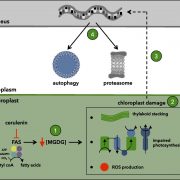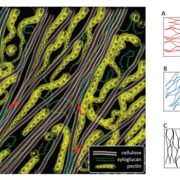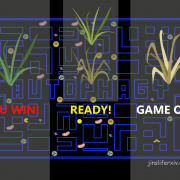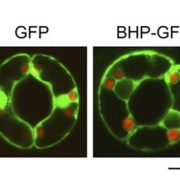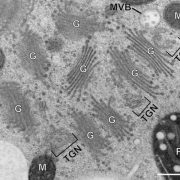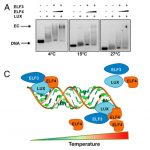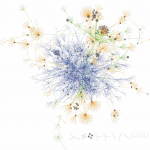Unlocking interspecies grafting (bioRxiv)
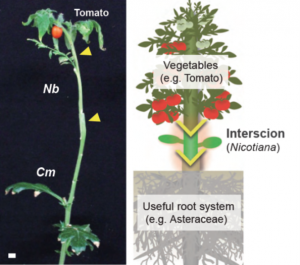 Plant grafting is an agricultural technique that joins plant tissues (e.g., the shoot and root) to confer beneficial traits from one plant to another. Although interfamily grafting is difficult in general, Notaguchi et al. found that Nicotiana benthamiana (Nb) has a strong potential to graft with phylogenetically distant plant species. Transcriptome analysis revealed that genes encoding cell wall-modification enzymes were induced at the junction of interspecies grafting involving Nb. Among such genes was NbGH9B3 encoding β-1,4-glucanase, which might degrade cellulose in the cell wall to promote cell-cell adhesion. Mutant analysis revealed that NbGH9B3 contributes to the grafting between Nb and Arabidopsis thaliana (At), and, when ectopically expressed, NbGH9B3 promoted grafting between At tissues (intrafamily grafting). Induction of GH9B3 homologs at the graft interface was a common trait in various plant species in the compatible intrafamily grafts, but Nb had a unique capability to induce this gene during interfamily grafting. This prompted the authors to use Nb as a grafting intermediate and, by doing so, they successfully grafted tomato to At or Chrysanthemum morifolium. This study deepens our mechanistic understanding of grafting and demonstrated Nb as a potent facilitator of interfamily grafting of plants with agricultural values. (Summary by Tatsuya Nobori) bioRxiv 10.1101/2020.03.26.010744
Plant grafting is an agricultural technique that joins plant tissues (e.g., the shoot and root) to confer beneficial traits from one plant to another. Although interfamily grafting is difficult in general, Notaguchi et al. found that Nicotiana benthamiana (Nb) has a strong potential to graft with phylogenetically distant plant species. Transcriptome analysis revealed that genes encoding cell wall-modification enzymes were induced at the junction of interspecies grafting involving Nb. Among such genes was NbGH9B3 encoding β-1,4-glucanase, which might degrade cellulose in the cell wall to promote cell-cell adhesion. Mutant analysis revealed that NbGH9B3 contributes to the grafting between Nb and Arabidopsis thaliana (At), and, when ectopically expressed, NbGH9B3 promoted grafting between At tissues (intrafamily grafting). Induction of GH9B3 homologs at the graft interface was a common trait in various plant species in the compatible intrafamily grafts, but Nb had a unique capability to induce this gene during interfamily grafting. This prompted the authors to use Nb as a grafting intermediate and, by doing so, they successfully grafted tomato to At or Chrysanthemum morifolium. This study deepens our mechanistic understanding of grafting and demonstrated Nb as a potent facilitator of interfamily grafting of plants with agricultural values. (Summary by Tatsuya Nobori) bioRxiv 10.1101/2020.03.26.010744
[altmetric doi=”10.1101/2020.03.26.010744″ details=”right” float=”right”]



